Project Category
Residence
Project Type
Private, Non-Government
Number of People
10
Project Location
Rural
Issues
Modernity, Details, Adaptability, Contextual, Resource Saving, Sustainability, Vernacular
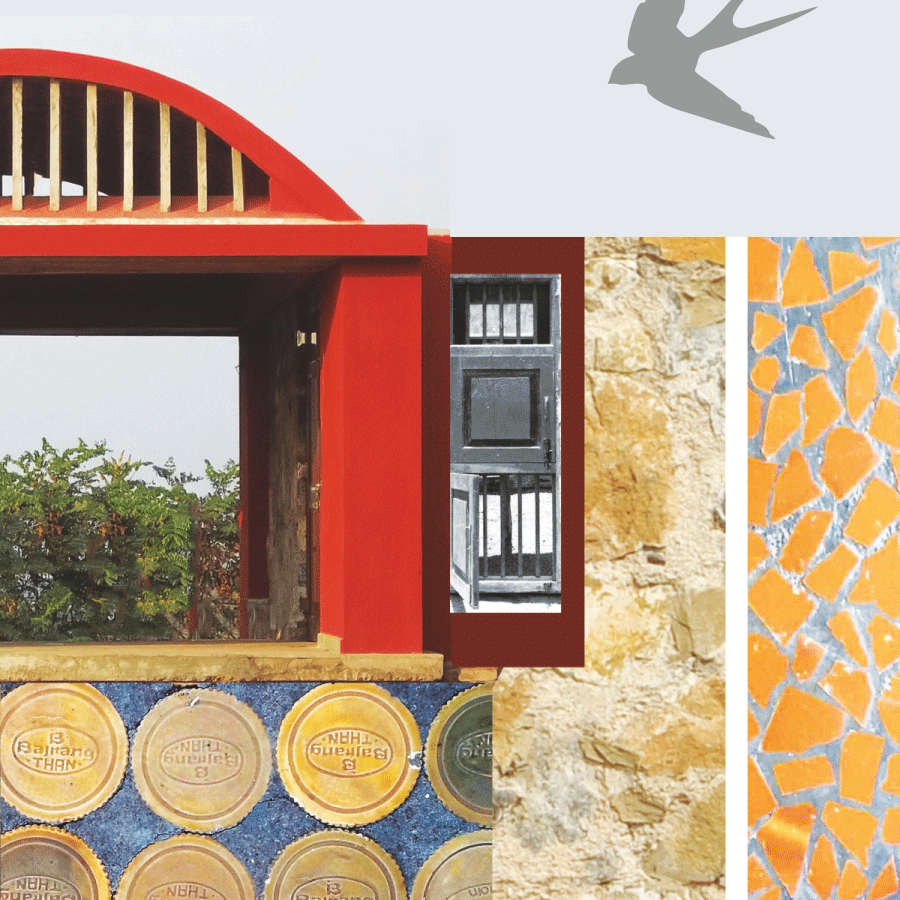
Project Category
Residence
Project Type
Private, Non-Government
Number of People
10
Project Location
Rural
Issues
Modernity, Details, Adaptability, Contextual, Resource Saving, Sustainability, Vernacular


Away from the noises of the city, this project was designed for an old couple to stay in a village called Rajsamdhiyala, 22 km away from Rajkot.
The site was located at the periphery of the village, on a mound, rather a hilly outcrop, next to the village water tank, offering breathtaking vistas of fields and village pond.
Building on a minimum footprint, use of alternative construction techniques, use of local construction materials, local masons and to make appropriate meaningful built spaces for an ageing couple, making the project energy efficient with fundamental Ideas were some of the concerns for the design.
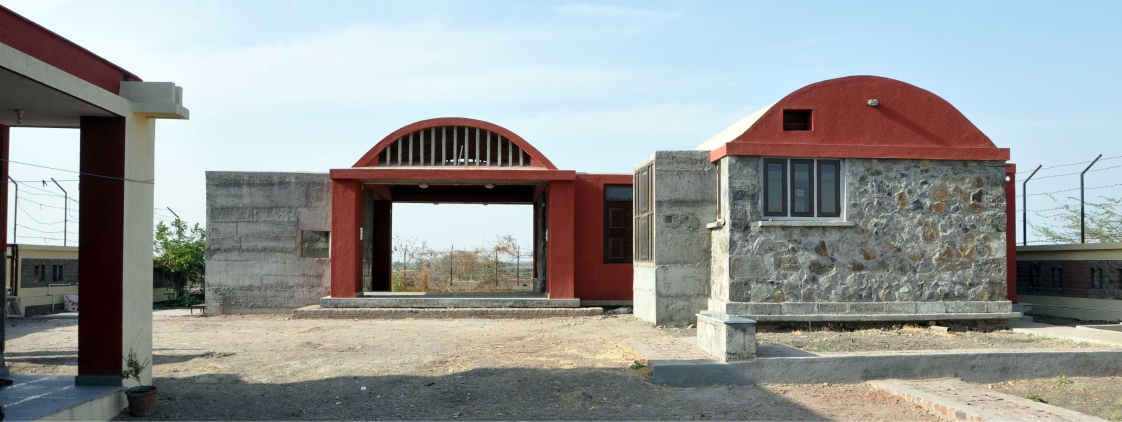
On the 1000 sq yards of plot, location of the house, leaving the north and a south for garden and landscaping became an important aspect to follow for the distribution of spaces with the context, the site offered. Orientation of the plot lead us to propose planting endemic spices of trees and kitchen garden at the Southern side of the plot, where by placing the kitchen at Southern side, connecting to kitchen waste water for watering the plants added to save water. Also, from this side village vistas connect the household to the village main.
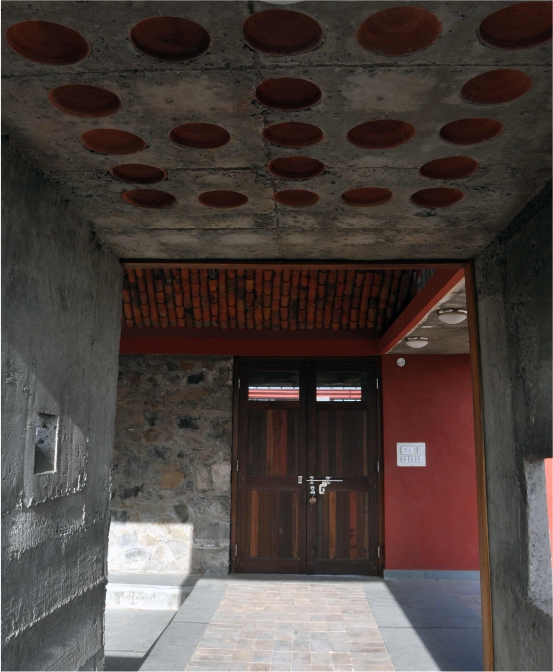
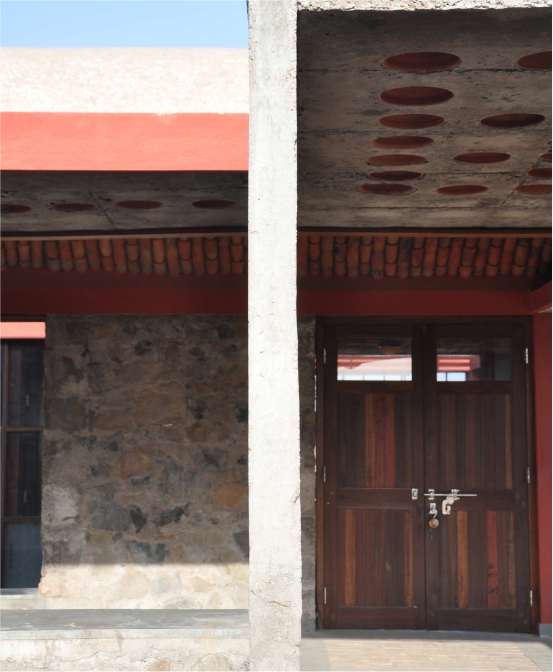
Semi-open living room was purposely designed to interpret verandah of village houses, where normally guests are invited, located at North-West side, making it always cooler during harsh summer heat. Also from this place one can see panoramic views of fields on one side and village reservoir on the other. Also, the bedroom got placed on the same side, having a built in seat at the western part to see the sunset and also connect to the northern gardens.

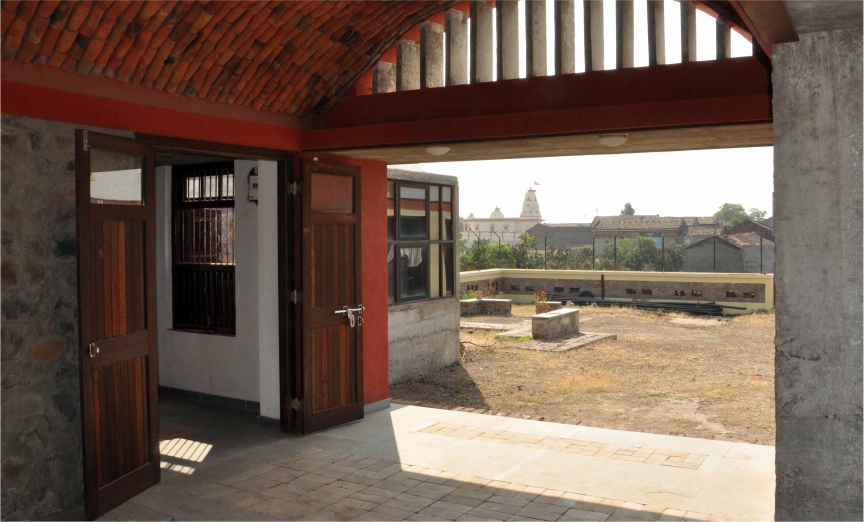
Ground fixing is only done with locally available bricks to provide direct access to the usable open areas and that too without any impervious sub grade thus allowing maximum rain water to percolate. The orientation of the functions are best suitable to efficiently use the sun direction, hence reliance on artificial lighting and ventilation is very minimal.

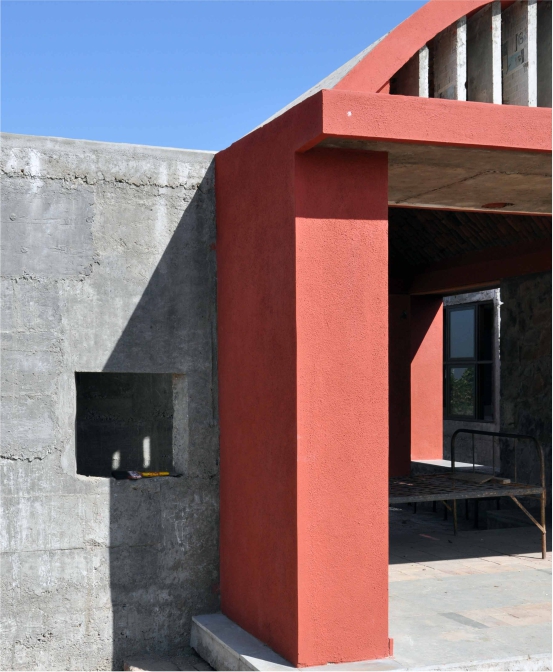
Primary elements of walls and roof in design are built with local brick, stone and terracotta tumblers, as they are procured and constructed with local skills, reduces the cost of both, procurement and construction.
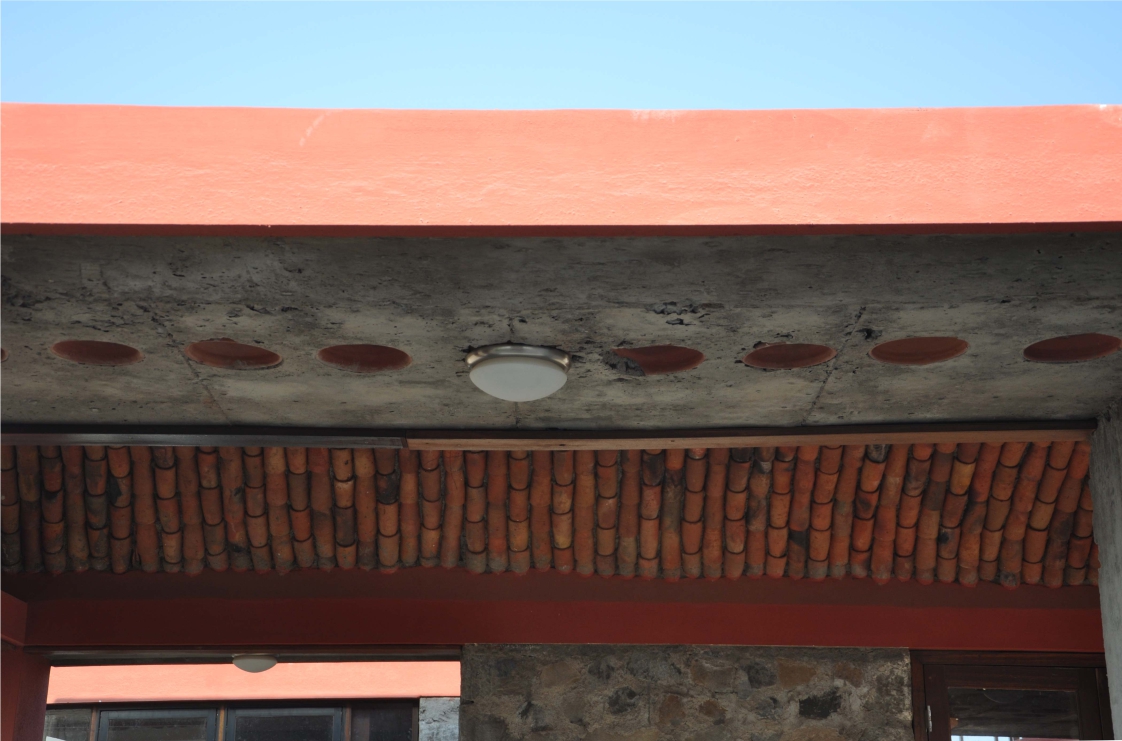
Primary elements of walls and roof in design are built with local brick, stone and terracotta tumblers, as they are procured and constructed with local skills, reduces the cost of both, procurement and construction.



Village potter was given special skill to fire the tumbler in order to derive the desired colour. Roof is made with locally made terracotta tumbler. The technology used is offshoot of the one developed by CSV Wardha (Maharashtra, India) and draws upon it in order to achieve a desired spatial experience.

This construction method achieves faster erection time (only 3 days from start to removal of shuttering; another week for the mortar to set); uses no steel or concrete (as in a conventional RCC slab). Since it is a catenary curve, it being in pure compression requires minimal support for load bearing. The roof thus saves time and labour resource.
Openings in the masonry were designed as per old windows procured from windows of demolished buildings.

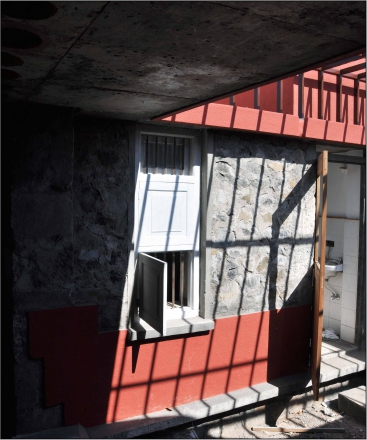

The flat roof (in RCC), wherever required, is designed in cognisance with the idea to save on the concrete being used in the slab. The fired clay bowls are used as filler material to reduce material consumption. The bowls in turn are locally produced cutting down on total volume cost by 30%.

The semi open area and outdoor paving is done with waste glazed ceramic jar lids and used fire bricks from local foundry kilns. These are procured free of cost from the ceramic factory as waste material.

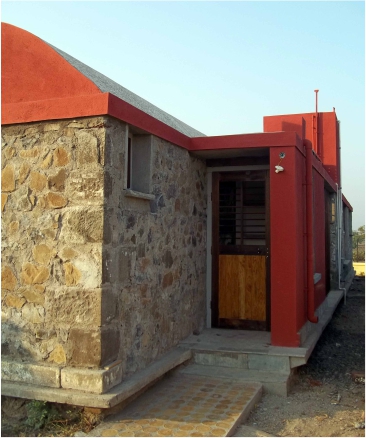

This had multiple advantages such as using industrial waste in a manner that is harmless for residential use, thus not using the fresh materials, clearing the debris sites near to the ceramic industries. This being bio-non degradable, would have remained at such sites for ever. By using the material from debris sites, we could open up top soil by a little bit. But if more users take to this idea then vast stretch of land fill areas can be opened, of course, cutting down on the cost of the project. The details of the house are designed in simplest manner to work efficiently using the minimum material amalgamation.

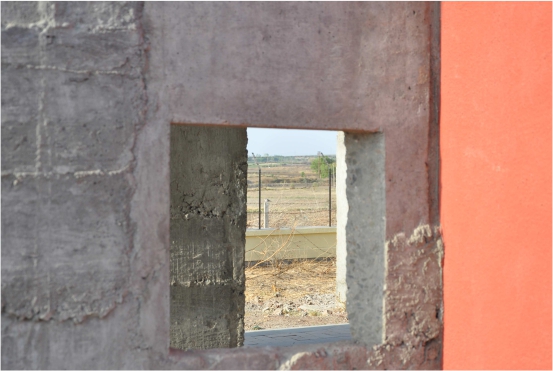
The design is integrated in terms of finishes. The walls of semi open areas of the living room are kept rough keeping in mind the semi-arid nature of the site. It will have a rustic feel typical of a village house. The design is not looked in terms of getting urban finishes… it is about the formation of spaces for urban people wanting to live in a village and also accepting local skill of construction to include everyone in process.
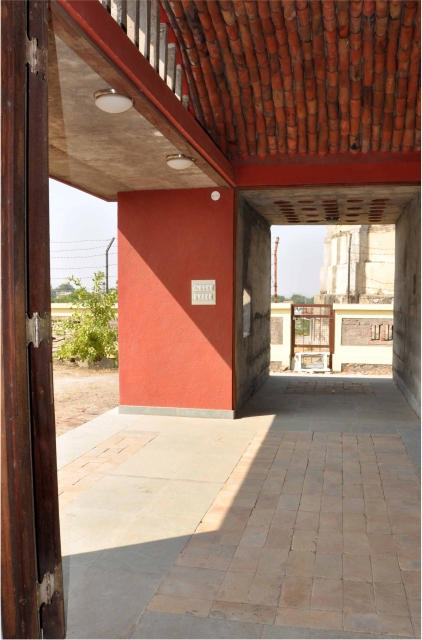


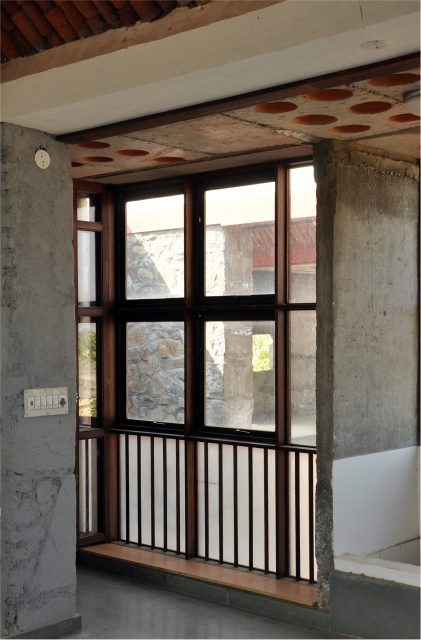
These areas have rough stone flooring along with fire clay brick patterns. The interior of the bedroom and of the kitchen are similarly plastered keeping in mind the need to achieve a certain level of cleanliness. These areas have polished natural stone finish. The external surfaces in stone are left exposed.
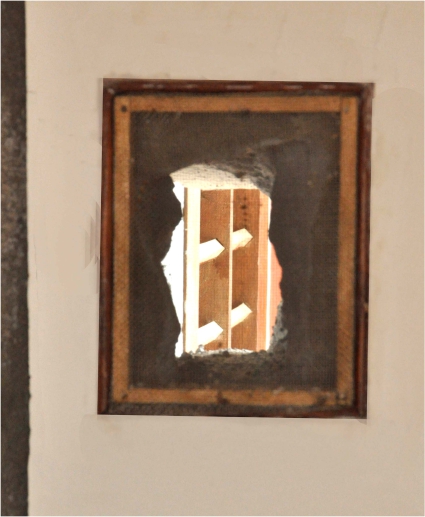
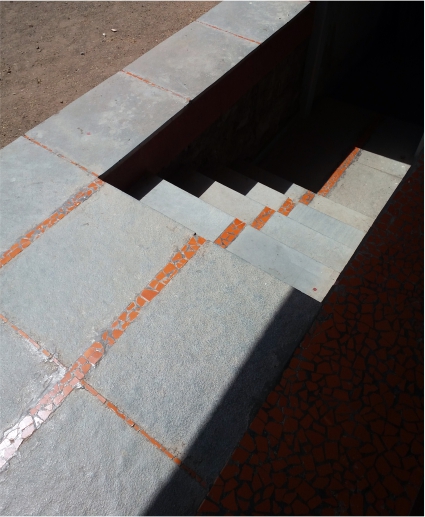
The waste water from the kitchen is directly fed in to the vegetable garden. Provision for a grease trap is made to remove access oil component. There is a provision for a bio-gas plant (not installed currently). When the desired occupancy levels are reached (two adults and two children using the toilets everyday) and in the next phase, this gas plant can generate gas enough to cook food one time a day for a family of four. Thus the overall savings would be 50% of the conventional LPG usage. The roof water is fed into a 5000 litre underground tank. This will be sufficient to provide drinking water to the family during the water scarce summer months from March to June
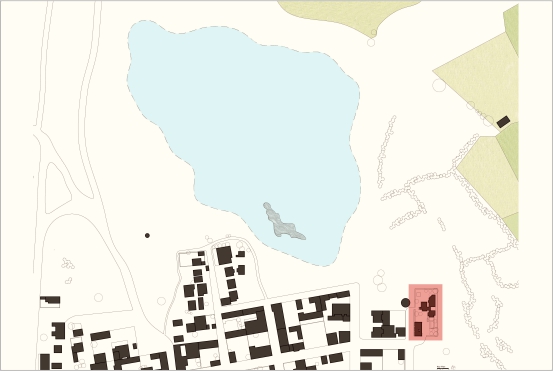




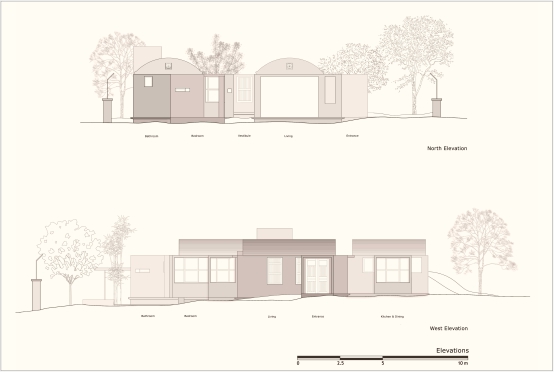


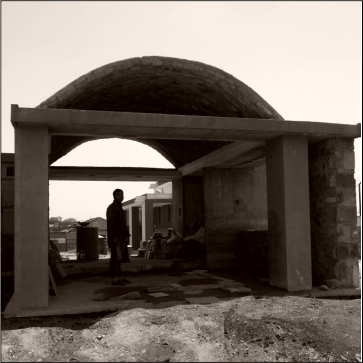
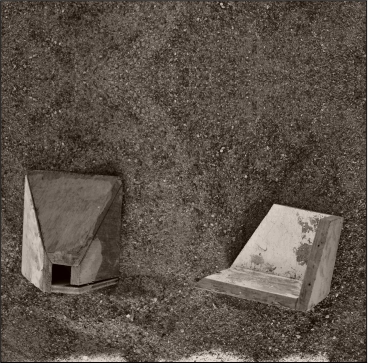

Project Details:
Client: Mr. Prataprai Bos
Address: Rajsamadhiyala House, Village Rajsamadhiyala, Dist Rajkot, Gujarat
Design Team (architecture & interiors): Parth Shah, Brinda P Shah, Mital Sorathiya
Structural Engineer: Mr. Vinod R Shah
Contractor: Local Contractor
· J K Cement, AYA Award, Green Architecture Award, 22nd AYA 2013, Chennai.
https://www.aya-jkcement.com/22ndjkaya.html
“Special Mention” for The Young Enthused Architect Award of the Architecture+Design & CERA Awards 2014.
https://www.youtube.com/watch?v=mJNtzilo9r8
· Publication – Book: JK AYA ABODES – 25 years of award winning houses, Page 238 to 241.
FB: BPS Architects – Our people Tree – Brinda & Parth Shah
https://www.facebook.com/BPS-Architects-Our-PeopleTree-Brinda-Parth-Shah-1023789937692793
· Country Retreat – Raj Samadhiyala House Exhibited @ UDRI_State of Architecture Exhibition NGMA_Jan Mar 2016
· Publication- Book : #91 RESIDENCES Contemporary Indian Houses Publication Produced by InCITE, Banglore.
· All India Stone Architectural Award, Commendation in a category Green Architecture, 2015.